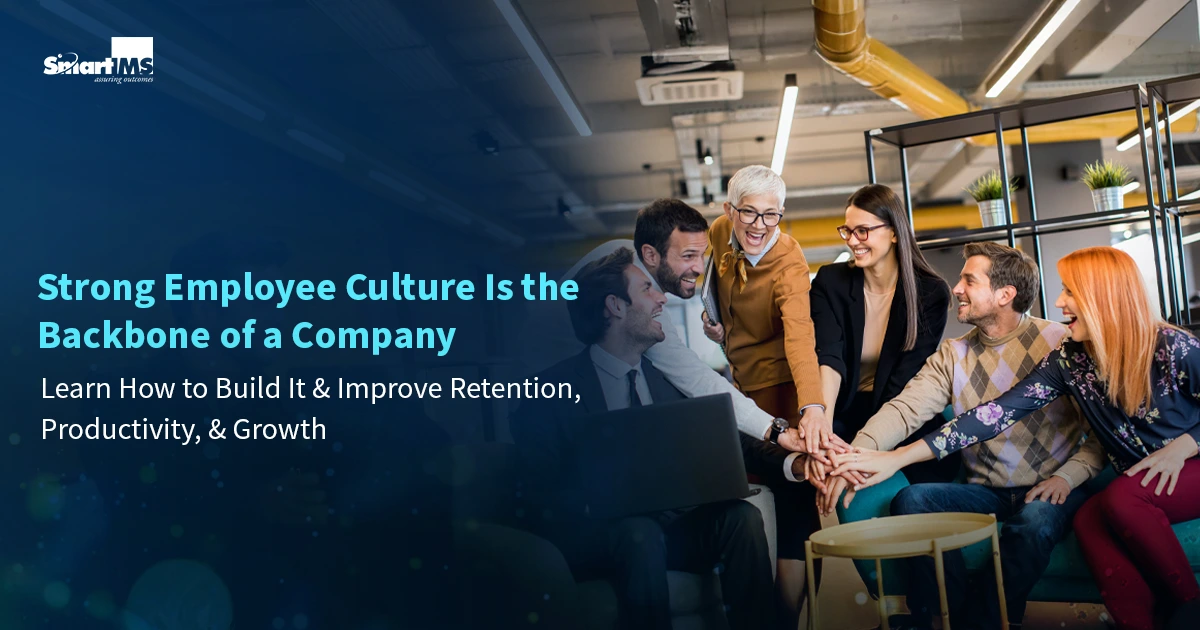Behind every thriving organization is a strong employee culture. It shapes how people work, interact, and grow together. Culture influences everything from decision-making and communication to innovation and customer experience. While many companies talk about culture, but only a few actually work to build it.
In today’s hybrid, fast-paced world, employees crave more than just a paycheck. They want to feel connected, respected, and part of something meaningful. That is where employee culture makes a lasting difference.
This blog explores how to adopt a strong employee culture, the benefits it brings, and seven best practices to help create a positive working environment in an organization.
What Is Employee Culture and Why Does It Matter?
Employee culture refers to the collective values, beliefs, behaviors, and norms shared by employees within an organization. It sets the tone for how work is done and how employees feel about their roles and the company as a whole.
Now, let’s understand,
How to Adopt an Employee-Centric Culture?
Adopting a strong employee culture requires more than publishing core values on a website. It must be intentionally woven into daily operations, leadership behavior, and company-wide decisions.
1.Start from the Top
Culture begins with leadership. When leaders show transparency, empathy, and accountability, it sets a clear standard for the rest of the team. For instance, a CEO who listens actively and recognizes employees’ efforts sends a powerful message.
2.Define Your Core Values Clearly
Make sure everyone understands what your company stands for. Values like integrity, collaboration, and innovation should be communicated clearly and lived consistently. Thus, holding people accountable for those values in hiring, reviews, and promotions is important.
3.Hire for Cultural Fit
It is not just about skill; it is also about attitude and alignment. During interviews, assess whether candidates resonate with your company’s values. For example, if you value creativity, ask how they have challenged the status quo in previous roles.
4.Communicate Openly and Often
Create a workplace where people feel safe to speak, ask, and suggest. Whether it is through town halls, internal newsletters, or team standups, regular communication builds trust and reduces misunderstandings.
Before understanding some of the crucial practices that will help you create a healthy work culture, let’s take a look at the benefits.
Benefits of a Strong Employee Culture
A culturally diverse workplace can offer significant advantages to both employees and the organization. Let’s know about it.
1.Higher Retention Rates
Employees who feel aligned with company values are more likely to stay. They feel emotionally connected, which lowers turnover.
2.Better Collaboration and Morale
A strong culture encourages teamwork and mutual respect. When employees share common goals and feel safe to collaborate, morale and performance go up.
3.Increased Productivity
People are more productive when they feel supported and inspired. Culture creates a sense of ownership that drives initiative and accountability.
4.Stronger Employer Brand
Happy employees become ambassadors. A positive culture strengthens your reputation, making it easier to attract top talent and build trust with customers.
7 Best Practices to Build a Strong Employee Culture
1.Recognize and Reward Good Work
Recognition fuels motivation. Whether it is a shoutout in a team meeting or a structured reward system, acknowledging effort and results makes employees feel seen and appreciated. People thrive in environments where their contributions are valued.
Make recognition a part of your culture, not a once-a-year event. Peer-to-peer appreciation, leadership acknowledgment, and even small wins celebrated collectively can boost morale and reinforce the behaviors that align with your values.
2.Create Space for Continuous Learning
A culture that values learning becomes a magnet for curious and driven individuals. When employees are encouraged to upskill and grow, they not only contribute more but also feel more fulfilled in their roles.
Support learning through online platforms, internal training, or mentorship programs. Let employees know that growth is expected and supported, not something they have to chase in their free time. The more people grow, the more your business does too.
3.Encourage Cross-Team Collaboration
Breaking down silos helps people connect across functions, departments, and hierarchies. When employees understand how their work fits into the bigger picture, they feel more aligned and engaged.
You can encourage collaboration through cross-functional projects, internal events, or even informal team-building activities. When teams work together, they learn from each other, build trust, and strengthen the fabric of your culture.
4.Foster Psychological Safety
Psychological safety means employees feel comfortable speaking up, asking questions, or sharing new ideas without fear of embarrassment or punishment. This is essential for innovation and open communication.
Managers can build this by creating inclusive team meetings, encouraging honest feedback, and responding to mistakes with curiosity rather than blame. A safe environment helps people show up authentically and contribute fully.
5.Make Inclusion a Daily Practice
Inclusion should go beyond policies and statements. It needs to be present in everyday actions, conversations, and decision-making. Employees who feel included are more likely to stay, perform, and lead.
For this, celebrate diverse perspectives, respect different experiences, and create spaces for underrepresented voices to be heard. Small actions like using inclusive language or rotating leadership roles in meetings can help build a sense of belonging.
6.Be Transparent During Change
Organizational change is inevitable, but how you communicate it shapes how people feel. Transparency builds trust and eases anxiety during uncertain times.
Whether it is a shift in leadership, strategy, or structure, share timely updates with clarity and honesty. Let employees ask questions and express their concerns. Being open helps reduce resistance and brings people along on the journey.
7.Celebrate Cultural Moments and Milestones
Taking time to acknowledge birthdays, anniversaries, or cultural festivals makes work feel more human. These celebrations show that employees are valued not just for their output, but for who they are.
Create shared moments that bring people together, even virtually. A simple message, a team shoutout, or a quick celebration can leave a lasting impact and reinforce a positive culture.
Wrap-Up: Culture Is Not a One-Time Effort
Building a strong employee culture is a continuous process, not a single event. It requires intention, consistency, and a deep understanding of what makes people feel valued and connected. As a result, organizations should prioritize culture not only to retain top talent but also unlock greater creativity, resilience, and growth.




